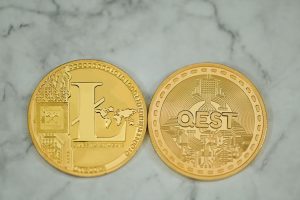Forex trading involves buying and selling currencies with the aim of making a profit. The value of currencies fluctuates constantly due to a variety of factors such as economic/political events, market sentiments, and global trends. Therefore, some currencies experience higher volatility and faster movement compared to others. In this article, we’ll look at the fastest moving forex currencies and what makes them move so fast.
1. Japanese Yen (JPY)
The Japanese Yen is one of the most volatile currencies in the forex market. It trades against the US dollar (USD/JPY) and other currencies such as the Euro (EUR/JPY). The Yen’s volatility is due to the Bank of Japan (BOJ)’s monetary policy, which involves frequent interventions in the currency market to maintain a competitive exchange rate. Additionally, Japan has a large economy that is heavily dependent on exports, which makes the Yen sensitive to global trade tensions and economic slowdowns.
2. Swiss Franc (CHF)
The Swiss Franc is another currency that experiences high volatility in the forex market. It trades against the US dollar (USD/CHF) and other currencies such as the Euro (EUR/CHF). The Franc’s volatility is due to Switzerland’s reputation as a safe-haven currency, which means that investors tend to flock to it during times of market uncertainty. Additionally, Switzerland’s economy is heavily reliant on the banking sector, which makes the Franc sensitive to global financial events.
3. Australian Dollar (AUD)
The Australian Dollar is a commodity currency that is heavily influenced by the country’s natural resources, particularly gold and iron ore. It trades against the US dollar (AUD/USD) and other currencies such as the Japanese Yen (AUD/JPY). The Aussie dollar’s volatility is due to its high correlation with global commodity prices, which can fluctuate rapidly due to supply and demand factors. Additionally, Australia’s economy is heavily dependent on exports to China, which makes it sensitive to the Chinese economy’s growth prospects.
4. Canadian Dollar (CAD)
The Canadian Dollar is another commodity currency that is heavily influenced by the country’s natural resources, particularly oil. It trades against the US dollar (USD/CAD) and other currencies such as the Euro (EUR/CAD). The Loonie’s volatility is due to its close correlation with global oil prices, which can fluctuate rapidly due to geopolitical tensions and supply and demand factors. Additionally, Canada’s economy is heavily reliant on exports to the US, which makes it sensitive to the US economy’s growth prospects.
5. New Zealand Dollar (NZD)
The New Zealand Dollar is another commodity currency that is heavily influenced by the country’s agricultural exports, particularly dairy products. It trades against the US dollar (NZD/USD) and other currencies such as the Australian Dollar (NZD/AUD). The Kiwi’s volatility is due to its high correlation with global commodity prices, particularly dairy prices, which can be affected by weather conditions and global supply and demand factors. Additionally, New Zealand’s economy is heavily reliant on exports, particularly to China, which makes it sensitive to the Chinese economy’s growth prospects.
In conclusion, the forex market is characterized by high volatility and rapid movements, particularly in some currencies. The fastest moving forex currencies are usually influenced by a variety of factors such as monetary policies, global events, commodity prices, and economic growth prospects. Therefore, traders need to be aware of these factors and use them to make informed trading decisions.





